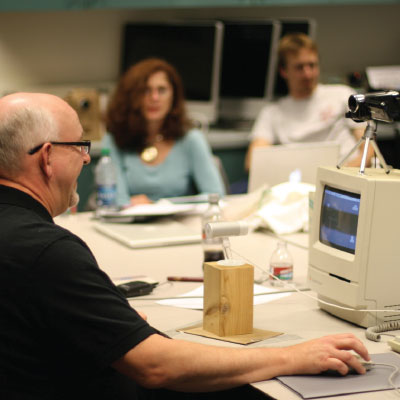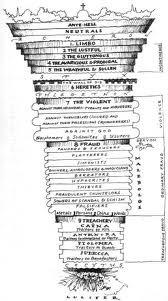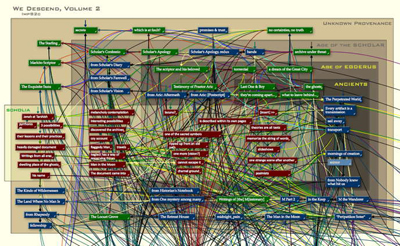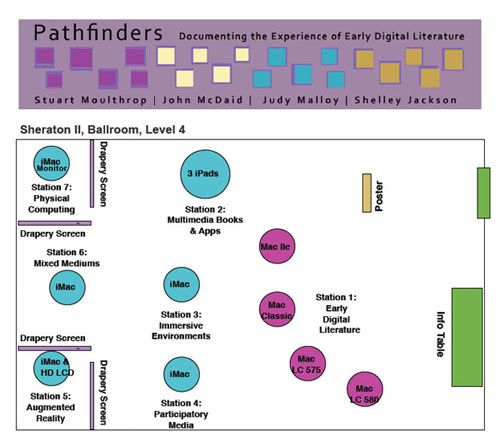CMDC student Madeleine Brookman was awarded a 2014 Auvil Fellowship by WSU to work with me in ELL and on the Pathfinders project. Specifically, Madeleine will work with me with the ongoing archival and preservation work for the electronic literature in my media library and those collected from the recent acquisition of the online journal, Poems That Go. We will be using the methods created for Pathfinders to our work in ELL. She will also assist in developing methods and best practices for preserving works of electronic literature created for the mobile environment, an area that is yet to be addressed by e-lit preservationists––we have just de-commissioned an early iPad for this purpose and plan to experiment with best practices for keeping versions of e-lit apps for future study. Finally, Madeleine will serve as the Media Librarian, continuing the work of Amalia Vacca to document and organize the works in my library.
-
Read Pathfinders, the multimedia, open-source book published June 2015.
Visit our Vimeo Channel to see the many videos of the authors’ traversals and interviews.
Here are photos from the traversals that took place in ELL. A special thank you to WSUV’s MarComm Department for their support with the photography.
Schedule for Traversals
From summer 2013-winter 2014, Stuart and I led the videotaping efforts of author traversals and interviews. During these events, we also scheduled author talks for the public. The schedule is below:
Stuart Moulthrop
Victory Garden
July 8-11, 2013
@Electronic Literature Lab (ELL), WSUV
Public Lecture: Tuesday, July 9; 7-8:00 p.m.
Nouspace Gallery (inside North Bank Artists Gallery)John McDaid
Uncle Buddy's Phantom Funhouse
August 7-10, 2013
@Electronic Literature Lab (ELL), WSUV
Public Lecture: Thursday, August 8; 7-8:00 p.m.
Vancouver Community LibraryJudy Malloy
Uncle Roger: The Blue Notebook
September 6-8, 2013
@Princeton UniversityShelley Jackson
Patchwork Girl
October 17-20
@Electronic Literature Lab (ELL), WSUV
Public Lecture: Friday, October 18; 7-8:00 p.m.
Angst GalleryBill Bly
We Descend
January 30-February 2
@Maryland Institute for Technology in the Humanities
Reading: Thursday, January 30; 4-5 p.m.Sponsors










